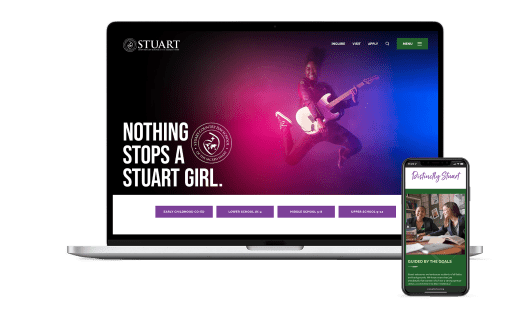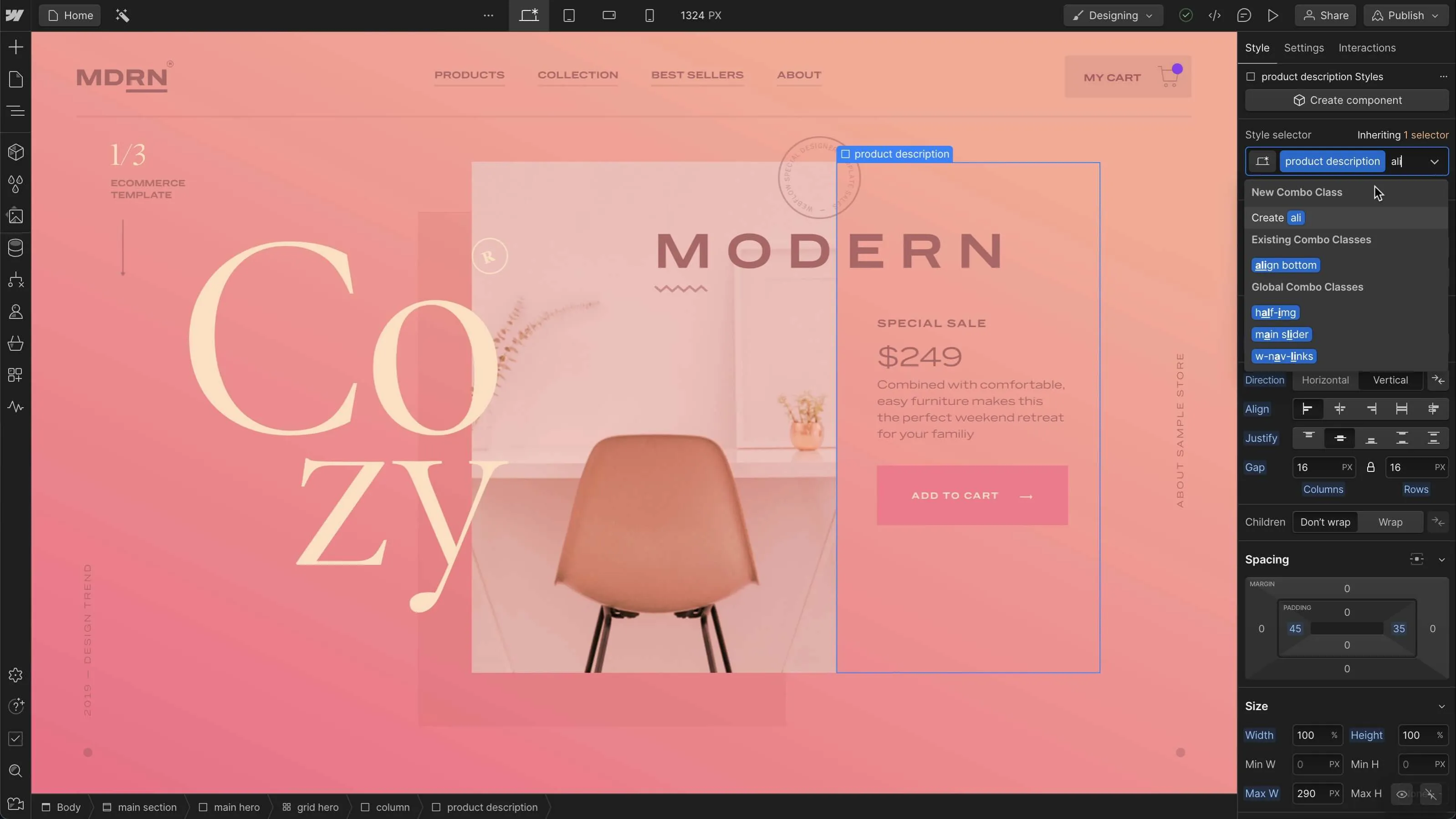How Professional Website Design Helps Build Trust with Your Audience
How Professional Website Design Helps Build Trust with Your Audience
Blog Article
Modern Site Style That Records Focus and Transforms
In a significantly electronic landscape, modern web site style has arised as a crucial factor in recording user attention and driving conversions. By purposefully employing aesthetic pecking order, responsive designs, and involving interactive elements, developers can produce experiences that not just draw in site visitors but additionally promote significant communications. Furthermore, efficient call-to-action methods play a vital function in guiding customers toward preferred outcomes. As we explore these important components, it ends up being clear that comprehending their interaction can considerably influence a site's efficiency and customer contentment. What are the essential components that truly make a distinction?
Importance of Visual Pecking Order
Aesthetic hierarchy is a vital component in internet site design, as it guides users' attention and boosts their total experience. By tactically organizing content, designers can direct customers to the most important details initially, thus enhancing engagement and boosting usability. Efficient aesthetic power structure utilizes various strategies, including size, spacing, color, and comparison. Bigger elements normally draw the eye, while contrasting colors can stress crucial messages, making them attract attention amongst more controlled elements.
Integrating a logical flow in web content arrangement is important; as an example, placing the most critical info on top of a page promotes prompt recognition. Regular use of typography, such as varying font sizes and designs, aids establish a clear material framework. This company not only aids in navigating however also constructs depend on, as customers really feel much more comfy when they can conveniently locate what they are looking for.
Eventually, a well-executed aesthetic pecking order not just improves visual allure but additionally dramatically affects user behavior. By focusing on vital components and making sure a seamless experience, designers can efficiently convert visitors into clients, enhancing the significance of this foundational layout concept in contemporary web site advancement.
Responsive Style for All Tools
Producing a seamless experience across various tools is important in today's digital landscape, where users access sites from tablet computers, smart devices, and desktops alike. Receptive design is an important strategy that makes certain sites adapt fluidly to various screen dimensions, alignments, and resolutions. By using versatile grids, images, and CSS media questions, designers can create formats that preserve visual integrity and performance, despite the device being made use of.
The value of receptive layout extends beyond looks; it directly influences individual interaction and conversion rates. A site that operates well on all gadgets encourages longer visits and minimizes bounce prices, as individuals are extra likely to connect with content that is simple to browse. Search engines, particularly Google, prioritize mobile-friendly websites in their rankings, making responsive design a vital component of search engine optimization (SEO)
Including receptive style not just improves user experience but also streamlines the advancement process. By developing a single website that works across gadgets, companies can conserve time and resources contrasted to developing different mobile and desktop computer versions. Eventually, responsive design is a fundamental method for modern internet site layout, making certain ease of access and satisfaction for all users, despite their gadget.
Involving Interactive Components
While a responsive style prepares for a functional web site, incorporating interesting interactive elements is crucial for capturing customer attention and cultivating much deeper links. Website Design. Interactive elements, such as computer animations, tests, and clickable infographics, develop a much more dynamic customer experience, urging visitors to spend even more time on the website
Incorporating interactive functions can likewise guide individuals through complex information, making it easier to digest web content. As an example, interactive sliders can highlight item variations, while embedded videos can offer demonstrations or testimonies that reverberate even more than static images or message. In addition, gamification techniques, like rewards for engaging or completing jobs with content, can boost individual motivation and retention.
Effective use of interactive elements not only enriches the individual experience however can additionally lead to greater conversion prices. It is vital to stabilize interactivity with efficiency; excessively complicated attributes might hinder site speed, adversely impacting user satisfaction.
Structured Navigation Practices
Reliable navigation is a cornerstone of any kind of successful internet site, as it directly affects individual experience and material availability. Structured navigating practices make sure that customers can conveniently locate information, enhancing their interaction with the site. you can check here A well-structured navigation menu should be basic and instinctive, commonly including a limited number of main groups to avoid frustrating site visitors.
To accomplish structured navigating, designers need to prioritize a hierarchical structure that logically organizes material. Implementing breadcrumb tracks can give users with context regarding their existing area within the website, allowing for seamless backtracking. Furthermore, using drop-down menus can effectively save area while still offering accessibility to subcategories.
Responsive layout is critical, as navigation should be useful across all tools (Website Design). Mobile users, particularly, take advantage of touch-friendly menus and retractable sections that maintain functionality without compromising aesthetic appeals

Reliable Call-to-Action Strategies
A well-crafted call-to-action (CTA) is important for directing users towards preferred outcomes on an internet site, as it encourages them to engage with content or buy. To optimize their performance, CTAs need to be clear, engaging, and tactically placed throughout the website.
First, utilize action-oriented language that communicates necessity or worth, such as "Get going," "Sign up with Now," or "Insurance claim Your Price cut." This language not just encourages customers but likewise establishes clear expectations regarding the following actions.
Second, take into consideration design aspects; CTAs should attract attention visually a knockout post with contrasting shades, ample whitespace, and famous positioning. A switch that is simple to see and click rises the chance of individual interaction.
In addition, personalizing CTAs based on individual actions or demographics can considerably improve involvement. Tailored messages resonate much more with customers, driving higher conversion rates.

Final Thought
To conclude, modern website design stresses the assimilation of visual hierarchy, receptive designs, involving interactive components, structured navigating, and efficient call-to-action methods. These components jointly enhance user experience, making sure that site visitors continue to be involved and motivated to check out material additionally. By focusing on these layout concepts, companies can dramatically improve user retention and conversion rates, inevitably bring about higher success in the electronic landscape. The constant advancement of web design highlights its crucial duty in reliable on-line communication and advertising.
In an increasingly digital landscape, modern-day internet site layout has actually emerged as a critical element in capturing user attention and driving conversions.Visual power structure is a critical element in web site design, as it guides individuals' attention and boosts their total experience.The visit this site importance of responsive layout expands beyond aesthetics; it directly impacts individual engagement and conversion prices.Including responsive layout not only boosts individual experience but additionally enhances the advancement process. Inevitably, receptive layout is an essential strategy for modern-day website style, guaranteeing ease of access and satisfaction for all individuals, no matter of their tool.
Report this page